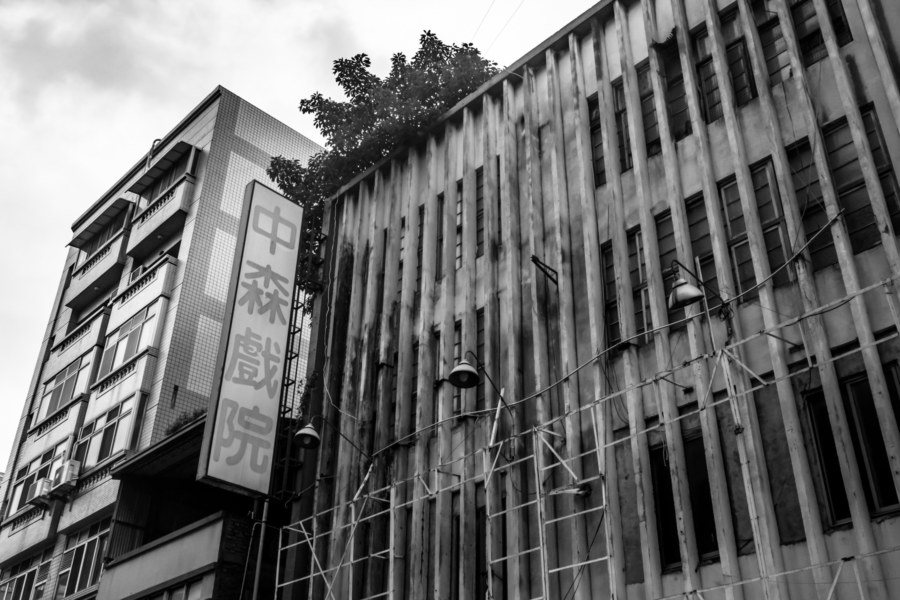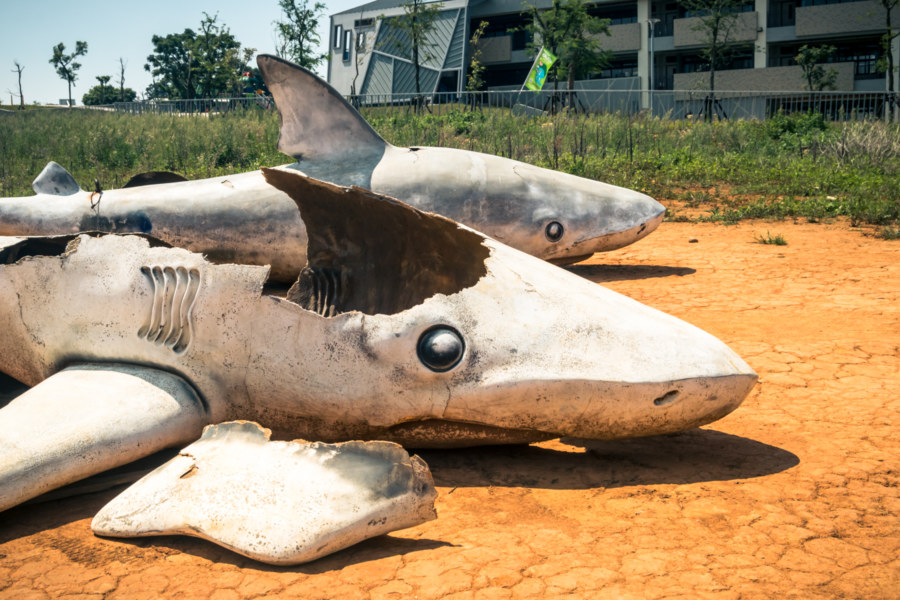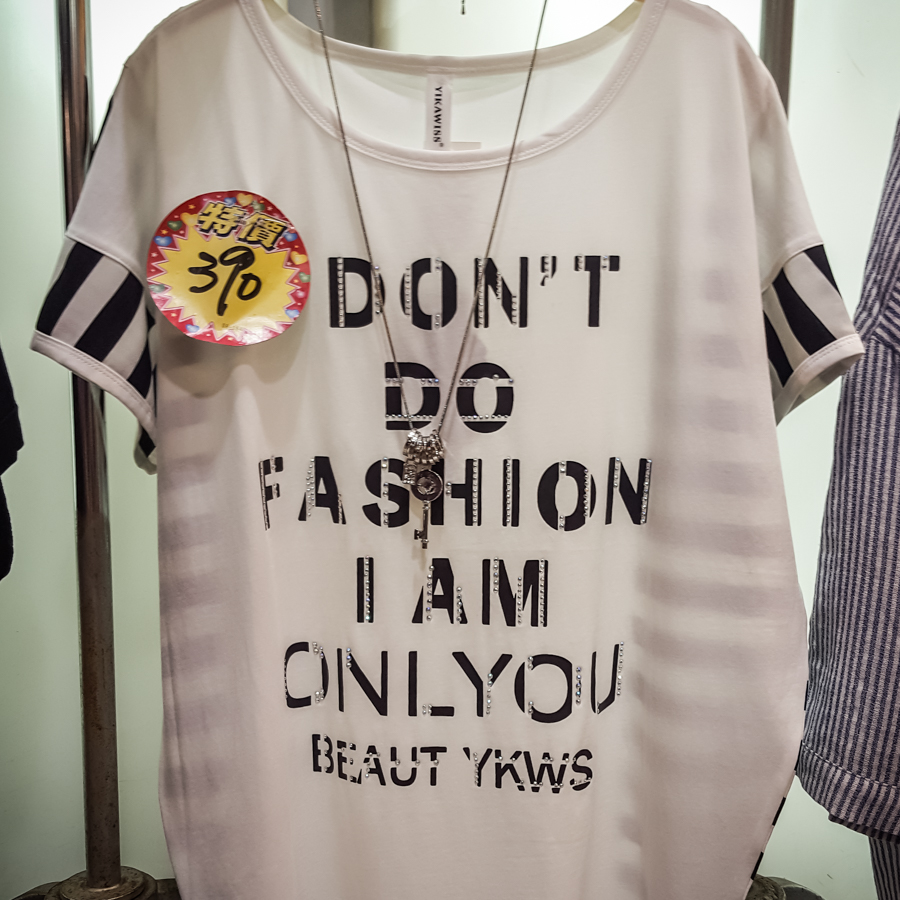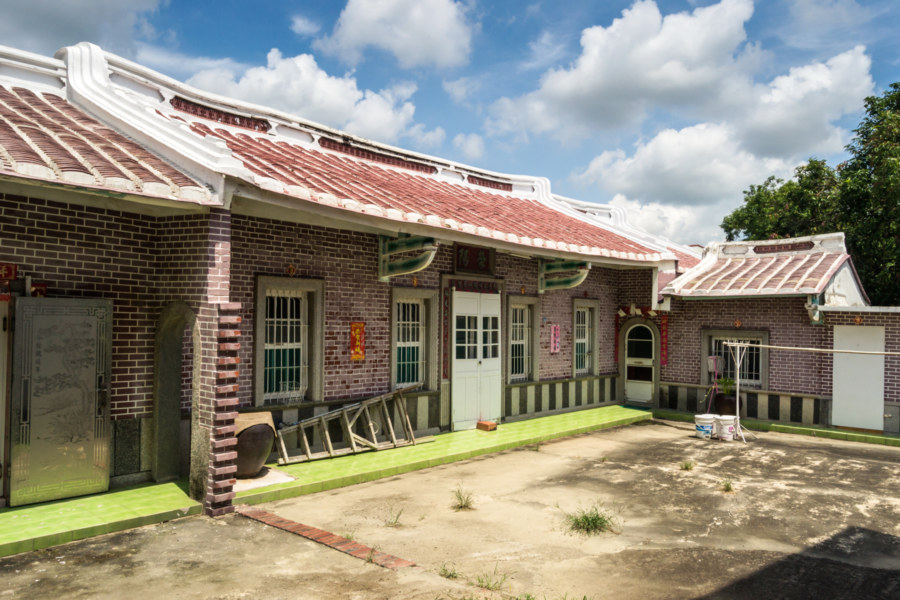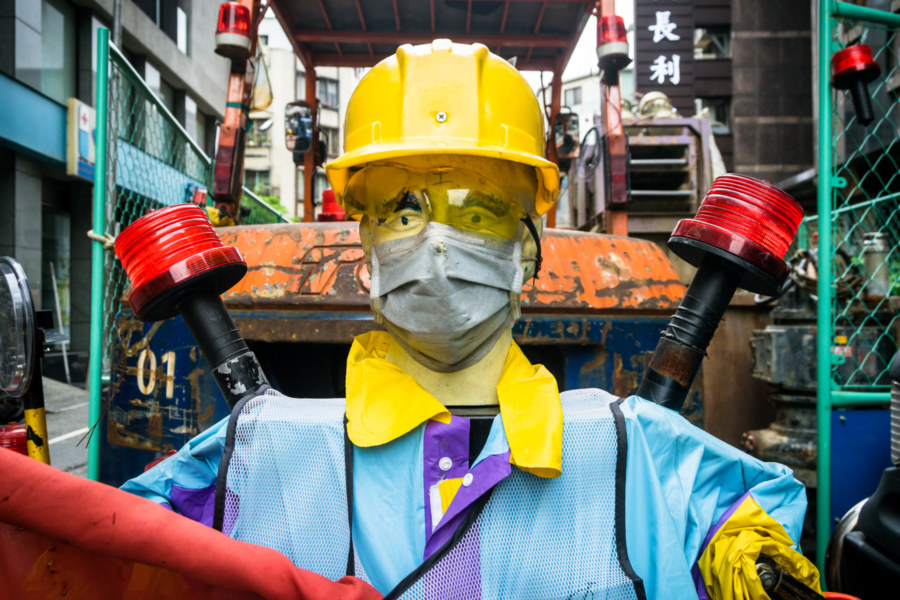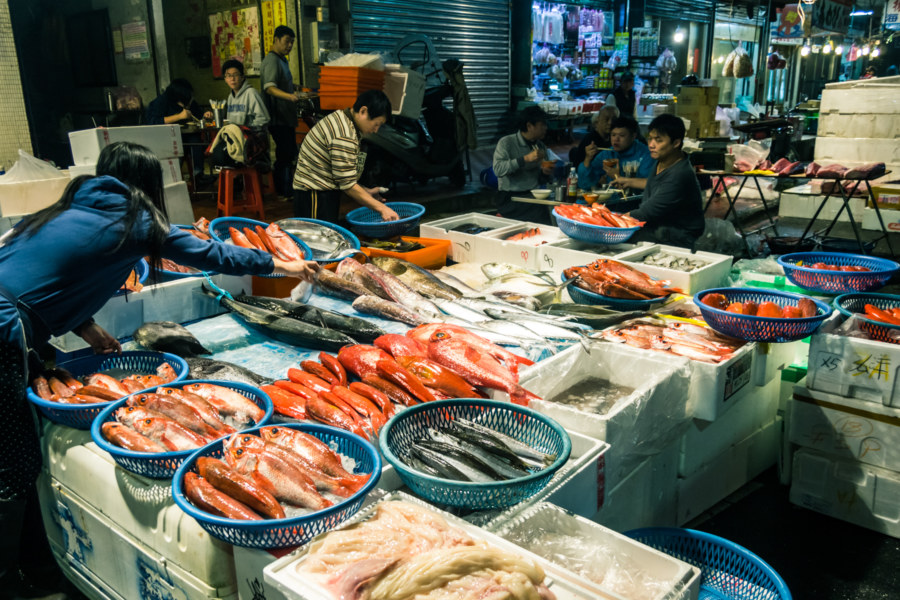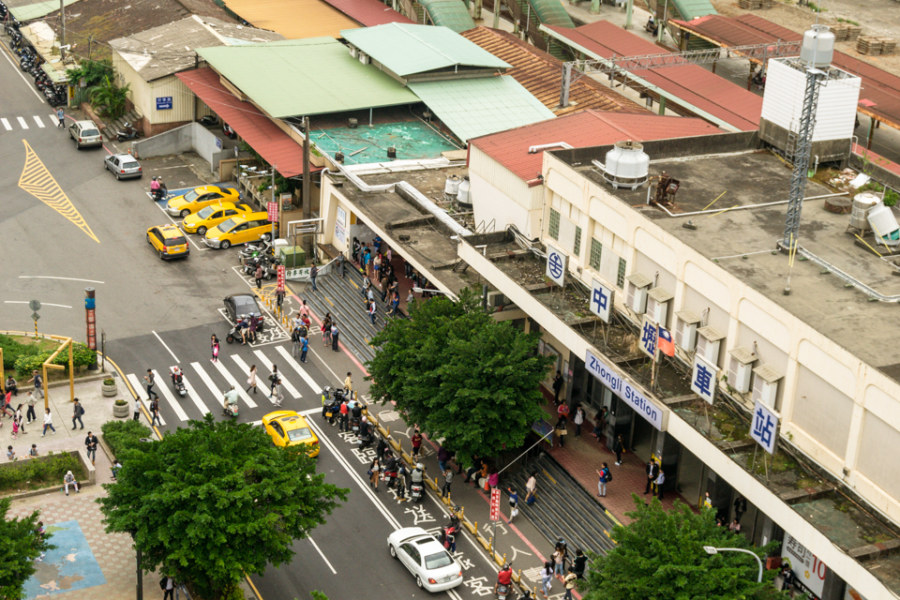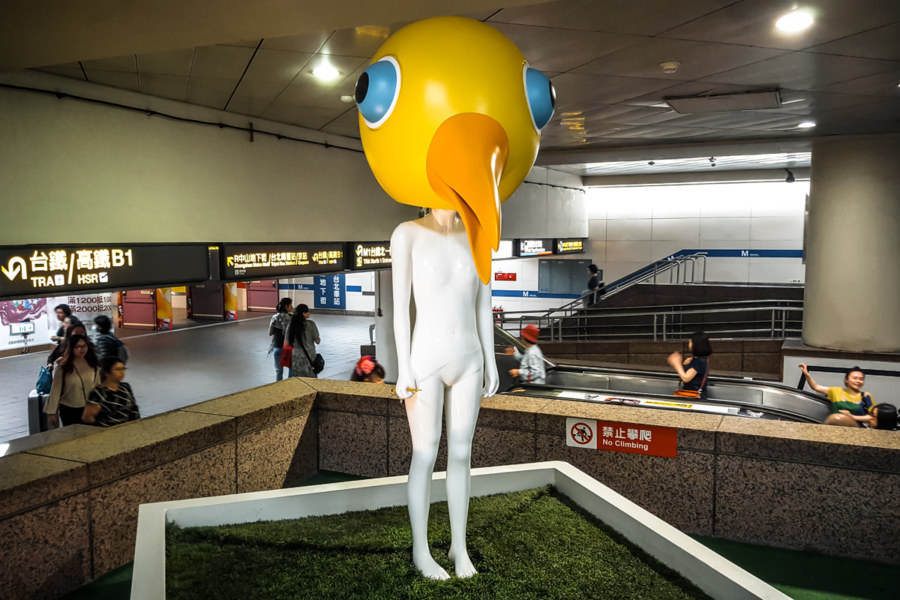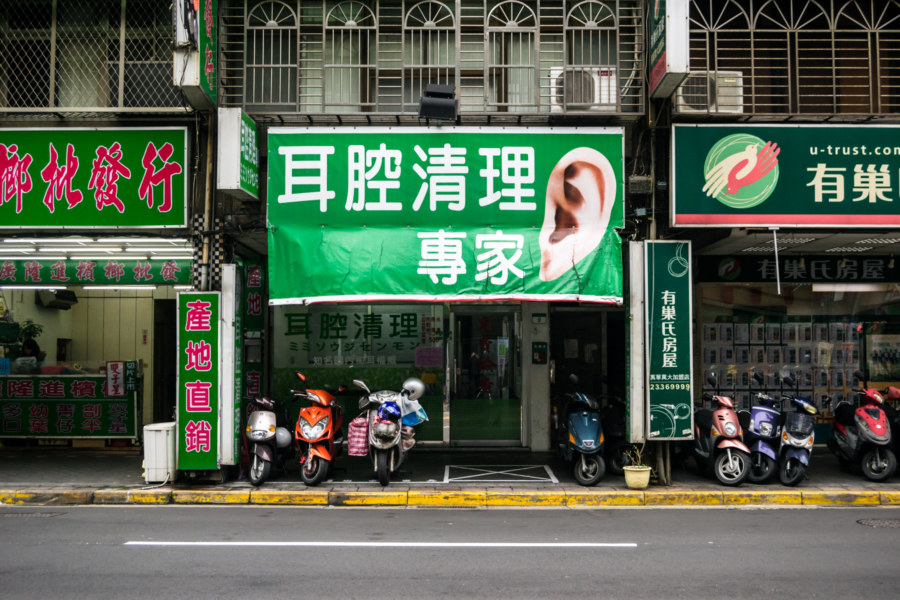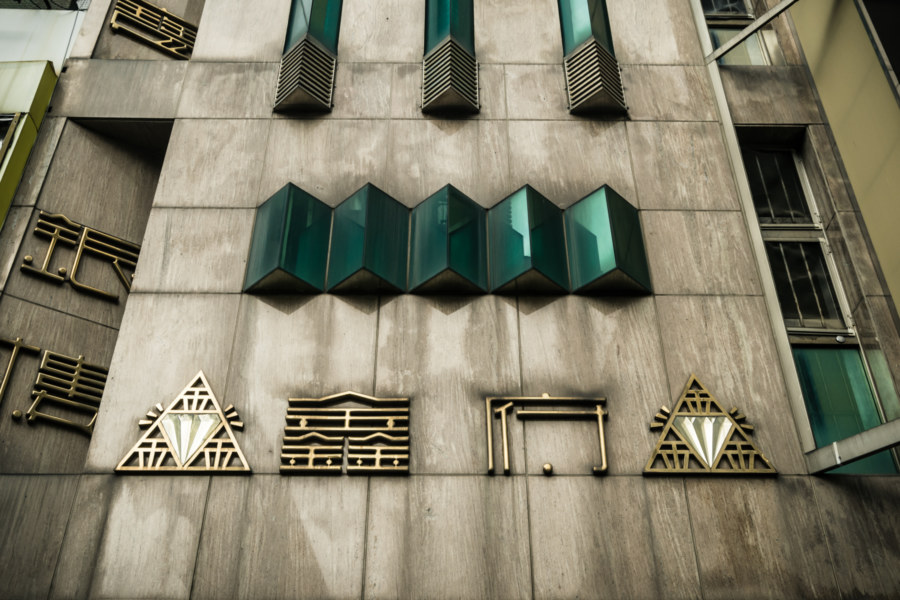Taichung is changing fast. The historic downtown area, formerly one of the worst examples of inner city blight in the nation, is presently undergoing a massive urban renewal effort. Some decaying and disused commercial buildings have been restored, many more await their fate, and others have been demolished before I’ve even had a chance to document their interiors. Zhōngsēn Theater 中森戲院 belongs to this last category: it came down after I shot a preliminary set of photos but before I had a chance to sneak inside. You have to move fast to capture these small histories in their unmaking.
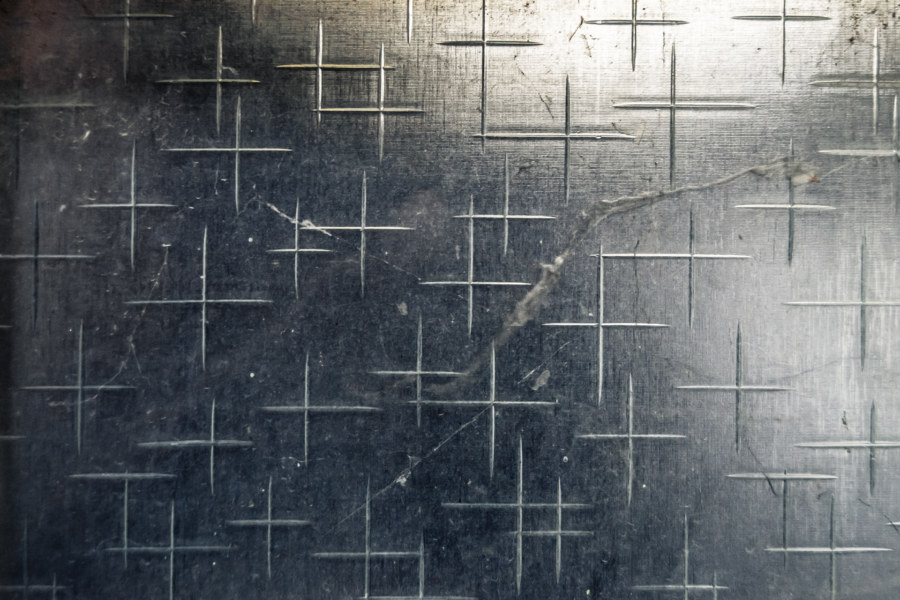
A top-level term for organizing content based on aesthetic.
Taichung Shark Cemetery 台中鯊魚墳場
Taichung Shark Cemetery (台中鯊魚墳場) is an unlikely roadside attraction near Tunghai University (東海大學) in Xitun, Taichung. There is no great mystery here—a nearby restaurant and banquet hall by the name of Tong Hai Fish Village (東海漁村) dumped a bunch of junk in this farmer’s field sometime prior to 2009, and since then it has become a popular place for young Taiwanese to visit and take photos.
Taiwan Night Market Fashion 1
In addition to their reputation for novelty foods night markets in Taiwan also offer an almost endless variety of cheap goods, particularly clothing and accessories. Much of Taiwanese night market fashion is amusing, quirky, provocative, bizarre, or even incoherent, though some of it is also quite clever. My understanding is that a lot of the weirder stuff originates in China, where massive factories churn out garments emblazoned with English text and pop culture references without regard for semantic meaning. This is almost certainly the result of copying passages from print or online media, using machine translation, or sheer laziness, but it might also be for aesthetic effect. Transcription errors are common, particularly when popular designs are copied by competing factories. Observed on the scale of years there is something almost evolutionary at work in night market fashion—styles mutate and are subject to a kind of natural selection. To celebrate the absurdity of this curious cultural phenomena I have assembled about 40 photos from my many visits to the night markets of Taiwan, almost all of which I have previously been shared on my Instagram account, the perfect vehicle for such inanity. Enjoy!
Southern Taiwan Ride 2015: Tainan to Pingtung City
Bicycle touring is one of the best ways to experience Taiwan. I don’t have an opportunity to go touring as much as I’d like but managed to find some time last year, in June of 2015, to embark upon a multi-day bicycle trip around southern Taiwan. My intention was to cover some of the same territory that I had rushed through on my first bicycle trip down south in 2013. I ended up racing a typhoon from Kenting to Taitung City that year—so the chance to explore the backroads of Pingtung at a more relaxed pace really appealed to me. I started my journey in Tainan, my favourite city in Taiwan, and cycled through Kaohsiung to Pingtung City, putting about 70 kilometers behind me. Gathered here are some photos from the first day of this trip, continued here.
Taiwan Road Safety Dummies 1 台灣的工程用假人一號
Road safety dummies are a distinctive feature of the streets of Taiwan. In Chinese they are generally known as engineering dummies 工程用假人 (pinyin: gōngchéngyòng jiǎrén), warning dummies 警示假人 (jǐngshì jiǎrén), or, more formally, electric flag-bearers 電動旗手 (diàndòng qíshǒu). According to law these robotic figures must be setup at all roadside construction sites to provide some measure of protection for workers as well as warn passing motorists and pedestrians of potential hazards. When hooked up to a car battery their stubby arms pump up and down, waving flags and other objects to direct traffic. Construction companies typically decorate these dummies with safety vests and hardhats, though it is not common for workers to express some creativity and personalize their dummies. Some of them even have individual names and histories! The rest of this post features photographs of some of the many road safety dummies I have encountered over the years.
Kanzaiding Fish Market 崁仔頂漁市場
Kànzǎidǐng Fish Market 崁仔頂漁市場 is supposedly the longest-running operation of its kind in northern Taiwan. Back in the Japanese colonial era the market was located along the banks of the Xùchuān River 旭川河 in Keelung, formerly a navigable canal running through the downtown core and emptying into the harbour. The name of the market is derived from a Taiwanese Hokkien term for the stone stairs that once lined the side of the canal; Kanzaiding literally means “top of the stairs”. The Japanese built a pier in the late 1920s, making it easy for fishermen to offload their catch next to the market, and convenient access to the railway network encouraged its growth.
Postcards From Zhongli 中壢明信片
I resided in Zhongli, Taoyuan, for two months at the very end of 2015 for reasons outlined in my first dispatch. In short: I wanted to try out living in another city in Taiwan and had a few good friends in the area, one of whom is fellow Canadian blogger Josh Ellis. In my time in Zhongli I captured numerous scenes from everyday life in this burgeoning conurbation of half a million. This post is meant to convey a sense of what it was like to live there for a while—just as I previously did for my time in Wenshan District, Taipei. It is not meant to be a comprehensive guide or a review; think of this as a loose collection of snapshots and impressions of a mid-sized Taiwanese city not commonly documented in English.
The Birdman of Taipei Station
A bizarre work of public art in the bowels of Taipei Station.
This striking installation is one of the more iconic and well-known works of public art in Taipei. Created by artists Hé Cǎiróu 何采柔 and Guō Wéntài (郭文泰) in 2009, it is entitled The World in Aves’ Eyes (愛維思看世界), Birdperson (鳥人), or Daydreams (夢遊) and can be found somewhere in the labyrinthine passageways beneath Taipei Railway Station (臺北火車站). Apart from the obvious, the immature, androgynous figure holds a pencil in its right hand (never to write a word), water continuously seeps from its neck, and its feet show the signs of a mild case of pigeon toe, a condition that should be familiar to anyone who has seen young Taiwanese posing for photographs. Here is the original creative statement that accompanies the piece:
「愛維思看世界」以稚嫩的身體、怪誕逗趣的鳥頭以及輕輕淺淺的流水,表現出E世代對世界的困惑,身體的稚嫩感彷彿要告訴世界,還不急著要長大,而側著的鳥頭以不成比例的尺寸,誇張的標明著自我的異化感,猶如一位誤闖地球的外星人,在幽浮般的蛋殼中孵化而出。愛維思(Aves)搖搖晃晃的嘗試著適應這難以理解的世界,那漾漾清水則是一般腦傾洩而出的困惑,沒有黑暗、邪惡、憂傷或者種種成人世界裡的光怪色彩,愛維思(Aves)的苦惱是屬於孩童一般的天真困惑,在陽光的照耀下甚至會散射出七彩的光暈、迷霧而迷人。
My ability to translate Chinese remains limited, particularly when it comes to the sort of conceptual language employed above, but I’ll do my best to provide the gist. From what I can tell…
Clean Your Head
Here’s something you might not have seen before: a professional ear cleaning service in Wanhua! When I shot this photo while riding around a couple of months ago I assumed it was a run-of-the-mill ear, nose, and throat doctor with a quirky sign out front. Turns out this is a famous shop by the name of Ěrqiāng Qīnglǐ de Jiā (耳腔清理的家, loosely: “Ear Canal Cleaning Home”) where you can have your ears cleaned by a “professional ear cleaning master” (zhuānyè tāo’ěr shī 專業掏耳師) for about 500 NT. Apparently Yáo Bīn (姚賓), the octogenarian proprietor, will be happy to show off jars filled with grotesque things he has unearthed over the course of five decades of aural spelunking.
A Gem of a Storefront
A classy storefront in Hsinchu not far from the train station.
This storefront immediately caught my eye when I arrived in Hsinchu a few hours ago. Both the facade and the lettering are unusually classy, showing a vintage style of design not commonly seen here in Taiwan. This is a jewelry shop, as the clever use of characters would suggest, and its formal name is Xīnfǔ Zhūbǎo 鑫府珠寶. The first character, xīn 鑫, is known as a sāndiézì 三叠字, or triplet character, and is composed of three instances of jīn 金, which means gold. Whoever designed the lettering obviously had some fun integrating a sparkling jewel into the two characters on either side of the shop’s name!…
